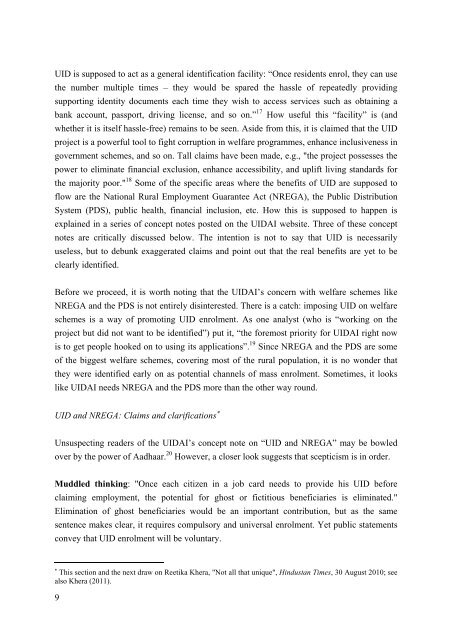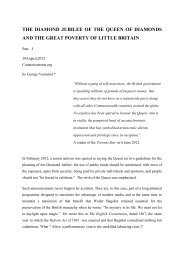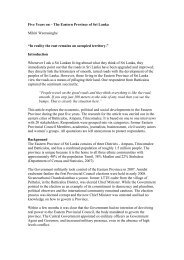UID For Dummies (PDF) - Countercurrents.org
UID For Dummies (PDF) - Countercurrents.org
UID For Dummies (PDF) - Countercurrents.org
Create successful ePaper yourself
Turn your PDF publications into a flip-book with our unique Google optimized e-Paper software.
<strong>UID</strong> is supposed to act as a general identification facility: “Once residents enrol, they can use<br />
the number multiple times – they would be spared the hassle of repeatedly providing<br />
supporting identity documents each time they wish to access services such as obtaining a<br />
bank account, passport, driving license, and so on.” 17 How useful this “facility” is (and<br />
whether it is itself hassle-free) remains to be seen. Aside from this, it is claimed that the <strong>UID</strong><br />
project is a powerful tool to fight corruption in welfare programmes, enhance inclusiveness in<br />
government schemes, and so on. Tall claims have been made, e.g., "the project possesses the<br />
power to eliminate financial exclusion, enhance accessibility, and uplift living standards for<br />
the majority poor." 18 Some of the specific areas where the benefits of <strong>UID</strong> are supposed to<br />
flow are the National Rural Employment Guarantee Act (NREGA), the Public Distribution<br />
System (PDS), public health, financial inclusion, etc. How this is supposed to happen is<br />
explained in a series of concept notes posted on the <strong>UID</strong>AI website. Three of these concept<br />
notes are critically discussed below. The intention is not to say that <strong>UID</strong> is necessarily<br />
useless, but to debunk exaggerated claims and point out that the real benefits are yet to be<br />
clearly identified.<br />
Before we proceed, it is worth noting that the <strong>UID</strong>AI’s concern with welfare schemes like<br />
NREGA and the PDS is not entirely disinterested. There is a catch: imposing <strong>UID</strong> on welfare<br />
schemes is a way of promoting <strong>UID</strong> enrolment. As one analyst (who is “working on the<br />
project but did not want to be identified”) put it, “the foremost priority for <strong>UID</strong>AI right now<br />
is to get people hooked on to using its applications”. 19 Since NREGA and the PDS are some<br />
of the biggest welfare schemes, covering most of the rural population, it is no wonder that<br />
they were identified early on as potential channels of mass enrolment. Sometimes, it looks<br />
like <strong>UID</strong>AI needs NREGA and the PDS more than the other way round.<br />
<strong>UID</strong> and NREGA: Claims and clarifications <br />
Unsuspecting readers of the <strong>UID</strong>AI’s concept note on “<strong>UID</strong> and NREGA” may be bowled<br />
over by the power of Aadhaar. 20 However, a closer look suggests that scepticism is in order.<br />
Muddled thinking: "Once each citizen in a job card needs to provide his <strong>UID</strong> before<br />
claiming employment, the potential for ghost or fictitious beneficiaries is eliminated."<br />
Elimination of ghost beneficiaries would be an important contribution, but as the same<br />
sentence makes clear, it requires compulsory and universal enrolment. Yet public statements<br />
convey that <strong>UID</strong> enrolment will be voluntary.<br />
This section and the next draw on Reetika Khera, "Not all that unique", Hindustan Times, 30 August 2010; see<br />
also Khera (2011).<br />
9










